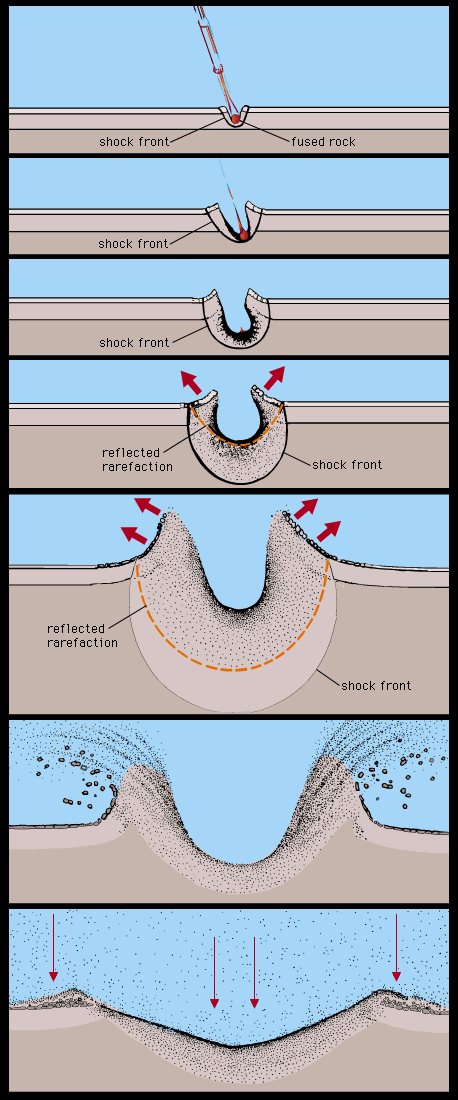Impacts and Dinosaurs
This scenario is proposed for the dinosaur killer (which produced the
Chicxulub crater near the Yucatan, diameter ~ 180 km, depth ~ 900 meters).
It is proposed that the dinsoaur killer asteroid
was about 10 to 12 kilometers in diameter, not large by any means, but this
object is thought to had kinetic energy of 1027 Joules
or around 250 billion Megatons!!
In 1980, a team of researchers consisting of Nobel prize-winning physicist
Luis Alvarez, his son geologist Walter Alvarez, and chemists Frank Asaro and
Helen Michel discovered that sedimentary layers found all over the world
at the Cretaceous-Tertiary boundary contained a concentration of
iridium many
times greater than normal (30 times and 130 times background in the two
sections originally studied). Iridium is extremely rare in the Earth's
crust because it is a siderophile, and therefore most of it sank
with the iron into the Earth's core during chemical
differentiation. As iridium is abundant in most asteroids and
comets, the Alvarez team suggested that an asteroid struck
the earth at the time of the K-T boundary.
Exactly how the Chicxulub impact led to the dinosaur's demise is not known.
Scientists imagine at least three scenarios: (i) the impact threw massive
quantities of dust into the atmosphere which blocked the Sun and arrested
plant growth (Nuclear Winter).
(ii) Sulfur released by the impact led to global sulfuric acid clouds that
blocked the Sun and fell as acid rain. (iii) Red-hot debris from the falling
asteroid or comet triggered global wildfires.
The above lead to atmospheric changes which last up to 10 years, and then
dissipate. Impacts can only explain rapid extinctions.
|

 |


